KANDY
Kandy is just on 116km (62mi) north east of Colombo. The second biggest town in Sri Lanka and the hill region’s cultural center. Kandy was the island’s capital for about two centuries (until 1815). Visit the renowned “Temple of the Tooth,” or Dalada Maligawa, where you can preserve and ardently reverence what is thought to be a Buddha’s tooth. Then walk around adjacent Kandy Lake and its green surroundings, here’s the Tooth’s Sacred Temple, containing the Buddha’s Tooth Relic.
Every year in August or late July, the Relic is drawn in procession around the town based on the stages of the moon–the event that marks one of Sri Lanka's most dramatic pageants, the Kandy Perahera. There is the last king's glory in Kandy, still manifest in the splendid chamber, palace, and court yards of the audience. Just four miles from Kandy, Peradeniya, is home to the world's most beautiful Royal Botanical Gardens. Every tropical and temperate tree and flower is cultivated here, and special houses are too beautiful to be true with orchids and cacti.
ATTRACTIONS IN KANDY
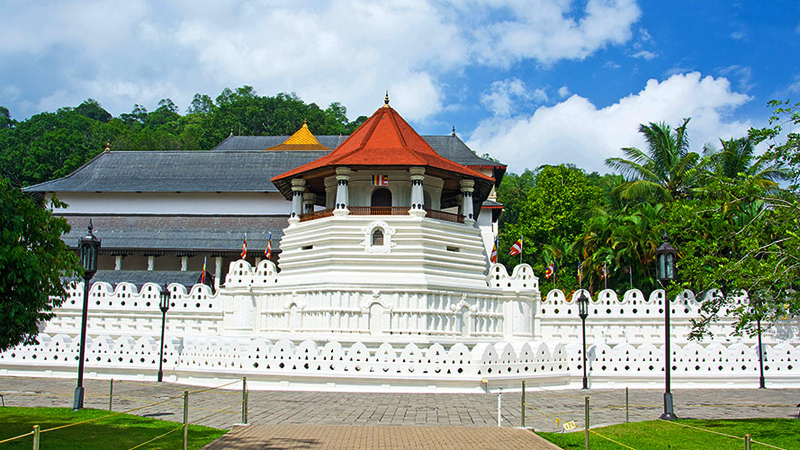
TEMPLE OF THE TOOTH RELIC (SRI DALADA MALIGAWA)
After Gautama Buddha’s parinirvana, Princess Hemamali and her husband, Prince Dantha, kept the tooth relic in Kalinga and smuggled to the island on the orders of her dad King Guhasiva. During the reign of Sirimeghavanna of Anuradhapura (301-328), they landed on the island in Lankapattana and handed over the tooth relic. Meghagiri Vihara (now Isurumuniya) was enshrined by the king in Anuradhapura. The relic’s safeguard was the monarch’s duty, so over the years the relic’s custody came to symbolize the right to rule.
Reigning monarchs therefore built the tooth relic temples very close to their royal residences, as was the case during the times of the Kingdom of Anuradhapura, the Kingdom of Polonnaruwa, and the Kingdom of Dambadeniya. The relic was housed in Niyamgampaya Vihara during the Gampola Kingdom period. In messenger poems such as Hamsa, Gira, and Selalihini it is reported that the tooth relic temple was located in Sri Jayawardenepura Kotte's city when Kotte's Kingdom was established there.
During Kotte's Dharmapala reign, the relic was held hidden in a grinding stone in Delgamuwa Vihara, Ratnapura. Hiripitiye Diyawadana Rala and Devanagala Rathnalankara Thera brought it to Kandy. King Vimaladharmasuriya I constructed a two-story house to deposit the tooth relic, and the building is now gone. It was brought to Meda Mahanuwara in Dumbara in 1603 when the Portuguese invaded Kandy. It was recovered in the Rajasinha II period and it was reported that the original building was restored or a new temple was built.
Vira Narendra Sinha built the current tooth temple. During Sri Vikrama Rajasinha's reign, the octagonal Paththirippuwa and moat were added. The construction of the Paththirippuwa is attributed to the royal architect Devendra Moolacharya. It was originally used for recreational activities by the king and was later offered to the relic of the tooth, it now houses the library of the temple.
The temple has been attacked in 1998 by the militant organization Liberation Tigers of Tamil Eelam (LTTE).

KANDYAN CULTURAL SHOW
This cultural show, held in Kandy town, depicts various forms of Kandyan dancing that was once native to the area but has now spread to different regions of the island. Originating from a dance conducted by Indian shamans who went to the island, Kandyan dance plays a significant part in the culture of Sri Lanka and is a highly anticipated event during the processions of perahera.
During the show, you will see several dances depicting the graceful motions of birds and animals that trace their roots back to the ancient ritual known as the Kohomba Kankariya, as well as vigorous acrobatic performances where people execute a sequence of jumping pirouettes and stunts such as plate-spinning and the spectacular ' fire walk ' that ends the show.
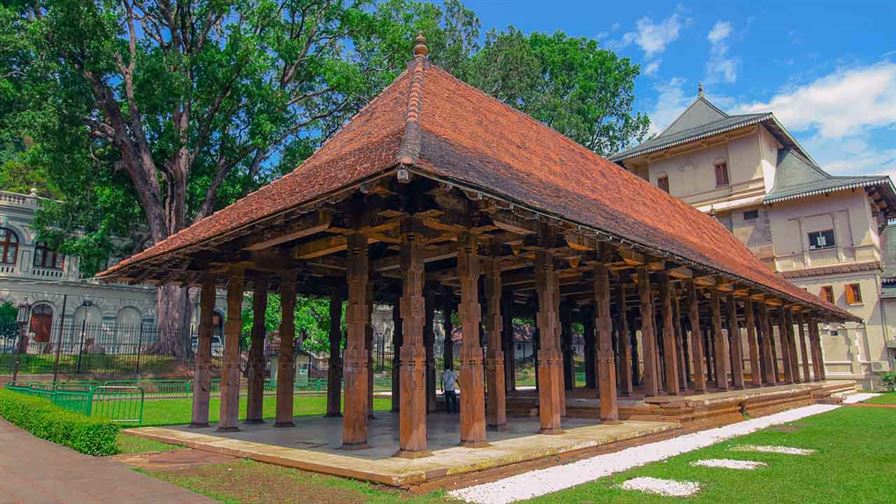
MAGUL MADUWA
The Magul Maduwa, or Kandy Royal Palace Audience Hall, is where the king met with his ministers and Royal Court members and is a splendid reminder of the ancient lineage of Sri Lanka. The Hall was of particular importance because it was here that the most revered relic, the tooth of the Buddha, was occasionally produced for public veneration. It was also here that the British ceded command of the country in 1815, signaling the end of more than 2,500 years of royal sovereignty and the start of the post-agrarian’ contemporary’ age.
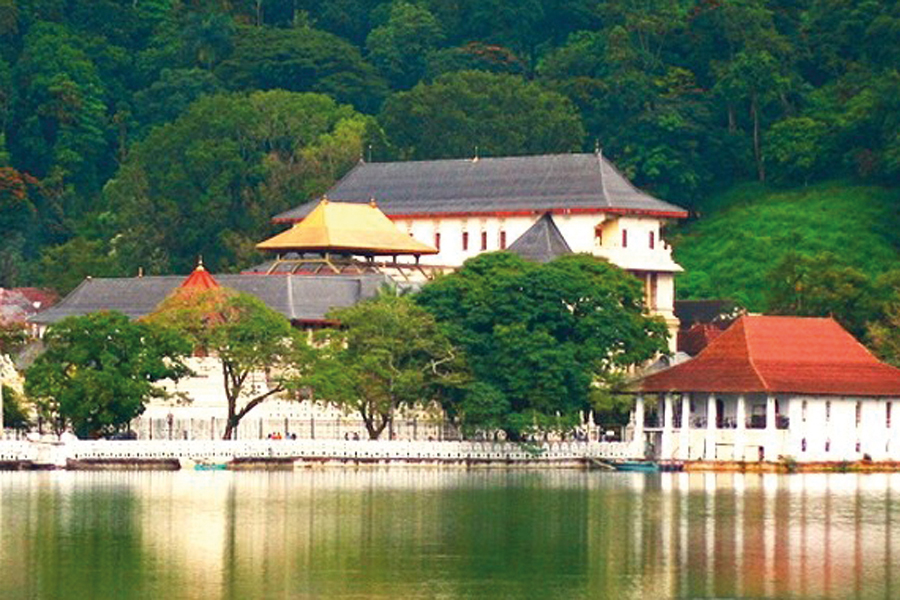
KANDY LAKE
Kandy Lake, also known as Kiri Muhuda or the Milk Sea, is an artificial lake built in 1807 by King Sri Wickrama Rajasinghe near the Temple of the Tooth in the heart of the hill town of Kandy, Sri Lanka. It has been reduced in size over the years. It’s a protected lake, prohibited from fishing. Formerly a stretch of paddy fields known as Tigolwela was the beautiful lake in front of the Tooth Temple. King Sri Wickrama Rajasinha transformed it to a pond in 1807.
Because in the middle of the Tigolwela there had been a beautiful pond called' Kiri-muhuda' (a' sea of milk'), the lake that was built later was named' Kiri-muhuda.' Deveda Moolacharya is regarded as the Kandy Lake architect. The king built a dam for the first time across the paddy fields, starting from the side of Pattiruppuwa (Octogen), where the steps leading to the Mahamaluwa lake (Esplanade) are still visible, stretching across to the Poya-maluwa. The dam, on which a roadway was built, allowed the king to cross over to the Vihare of Malwatte. The lake has numerous local legends and folklore. One such is that the king's harem used the tiny island in its middle for bathing and was linked to the palace through secret tunnels.
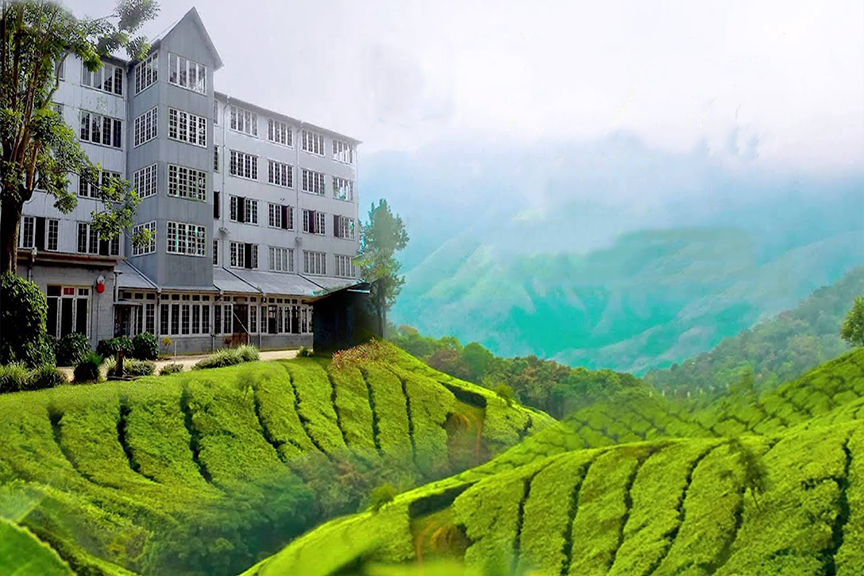
CEYLON TEA MUSEUM HANTANA
The museum located three miles from Kandy city in Hantane, in Sri Lanka’s central region. The Hantana Tea factory built in 1925 converted as the museum. The construction of the factory consists of four floors. The ground accommodates heavy equipment; in the withering process, the first floor takes up some instances.
Library and second floor audio-visual presentations while third floor retail outlets are located. Converting the fourth floor into a deluxe restaurant. The English Gentleman, James Tylor, traces the 130-year history of the first tea plant brought to Sri Lanka. Tea Museum is a joint project by the Sri Lanka Tea Board and the Planters' Association of Sri Lanka.

ROYAL BOTANIC GARDEN
Royal Botanic Gardens, Peradeniya is in the central province of Sri Lanka about 5.5 km south of Kandy town. It attracts 2 million visitors every year. It is close to the Mahaweli River (Sri Lanka’s longest river). It is known for its orchid collection. The garden contains over 4000 plant species including orchids, spices, medicinal plants and palm trees.
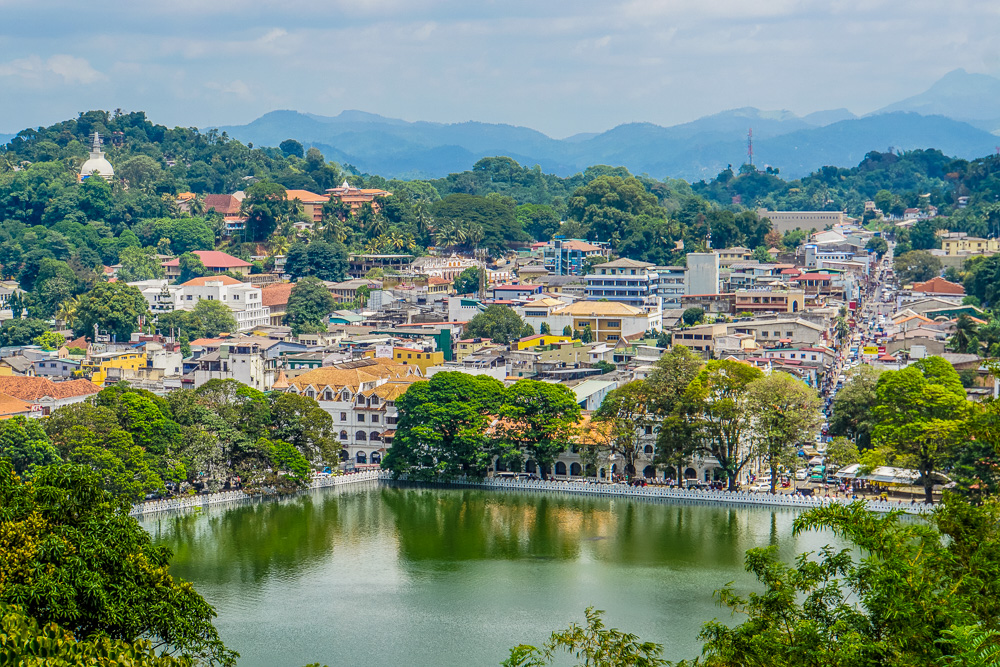
KANDY VIEW POINT
Kandy view point is situated at Rajapihilla Mawatha near Kandy Lake. Approximately 1 km steep climb to the rajapihilla mawatha, there is a location where you can see a panoramic perspective of the kandy town, with lake and sri dalada maligawa. Very popular place for tourists. Restaurants and shops of souvenirs. The parking of the car is restricted. In this location, road vendors can be a nuisance.
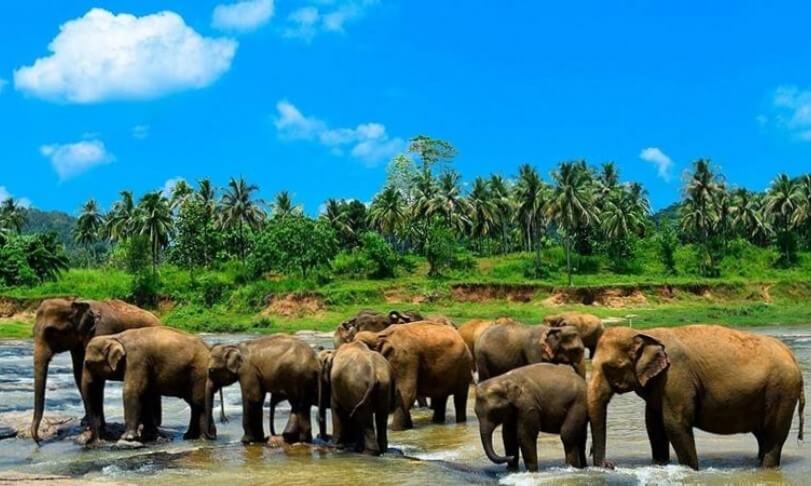
PINNAWALA ELEPHANT ORPHANAGE
Pinnawala Elephant Orphanage is an orphanage, nursery and captive breeding ground for wild Asian elephants located in the village of Pinnawala, 13 km northeast of the town of Kegalle in the province of Sabaragamuwa, Sri Lanka. Pinnawala is home to the world’s largest herd of captive elephants. There were 96 elephants living in Pinnawala in 2011, including 43 males and 68 females from 3 generations.
Feeding time
Visitors are completely enamored at feeding time when the younger babies are bottle fed with enormous amounts of infant formula, which they guzzle down in a few seconds. You can watch them feeding at 9.15 a.m., 1.15 p.m. and 5.00 p.m.
Bath time
Bathing is a great pachyderm pleasure, and the nearby wide river allows elephants to bathe twice a day, a regime that is essential for the hygiene, comfort and happiness of an elephant. Bath times are from 10 a.m. until 12 p.m. and from 2 p.m. until 4 p.m.
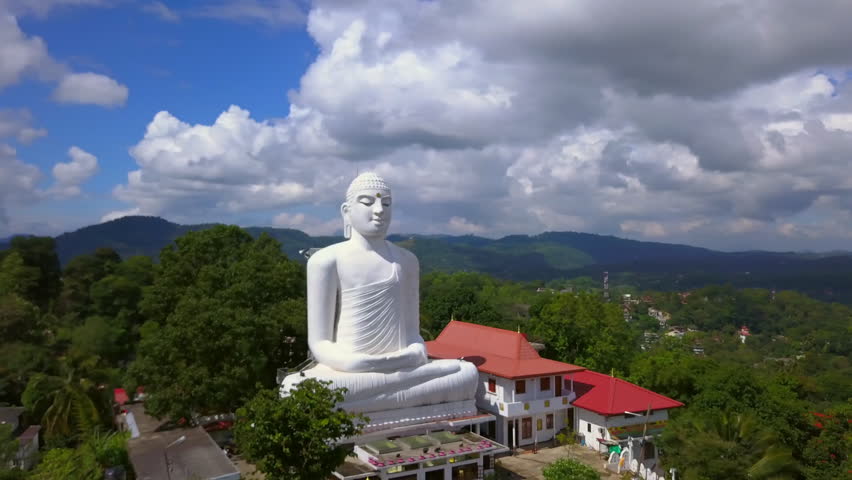
BAHIRAVAKANDA VIHARA BUDDHA STATUE
The Bahiravakanda Vihara Buddha statue, with its steps up the back leading to a dramatic perspective over the town, is a literal as well as spiritual highlight of your visit to Kandy. The 88 ft pure-white statue, which contains a gallery showing photos of Buddha’s lives from child to manhood, is part of a tiny, intimate convent on the hillside just outside the town. Building started in 1972, and ten years later the statue, its crowning glory, was finished. The monastery and statue is now an established characteristic of the Kandy tourist path with all the classic accoutrements, including sculptures and traditional historical depictions.
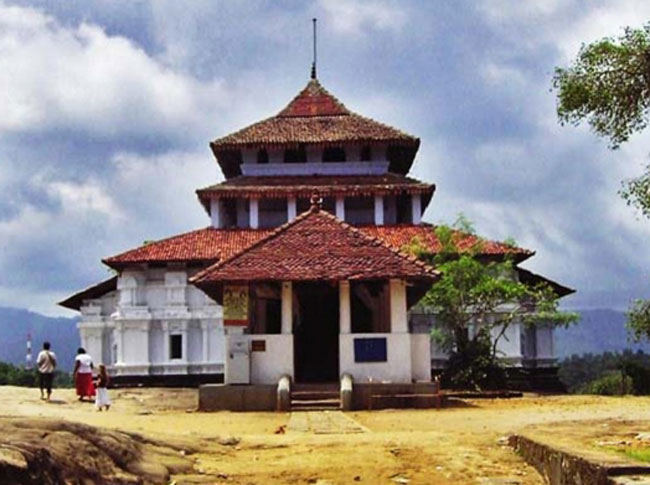
LANKATILAKA TEMPLE
At the outskirts of Kandy city, one will find this unique Buddhist temple built of stone, brick, and lime plaster. During the reign of King Buvanekabahu IV, Lankatilaka Temple was first built in 1344. Built on a large, uneven outcrop, this temple forced the builders to build an uneven foundation. The temple was originally constructed in four stories and rose about 25 meters above sea level. Now, the temple has only a first floor section covered with a wooden ceiling tiled. The primary entrance of the “dragon arch,” facing east, is accessed from a long stone staircase that leads from the village at the rock base.
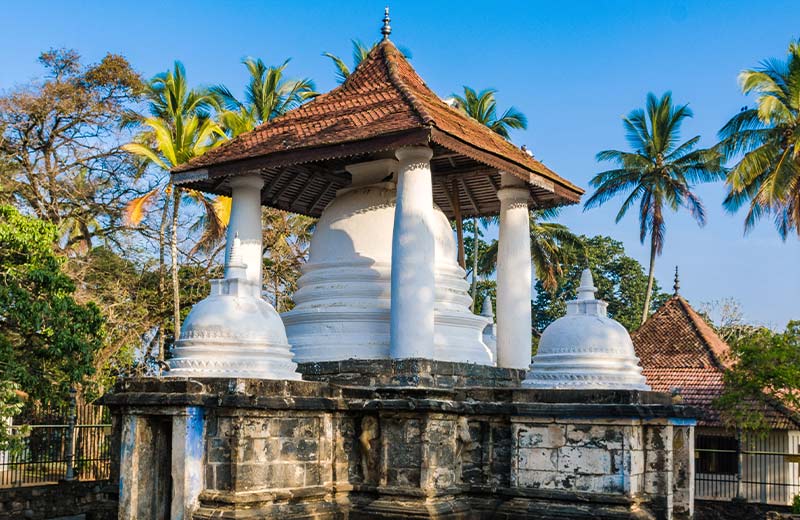
TEMPLE OF THE GADALADENIA
King Wickramabahu built the Gadaladeniaya Temple in 1344 during the time of the Gampola Kingdom. You can see the Dageba (pagoda) at the door on your correct side. This consists of one primary Dageba and four tiny ones. A roof covers the primary Dageba. It is surrounded by four tiny shrine chambers, each with a tiny dageba at the top. The Bo tree is located in front of the dageba, along with an old inscription. You can see that a fence is covered to prevent damage.
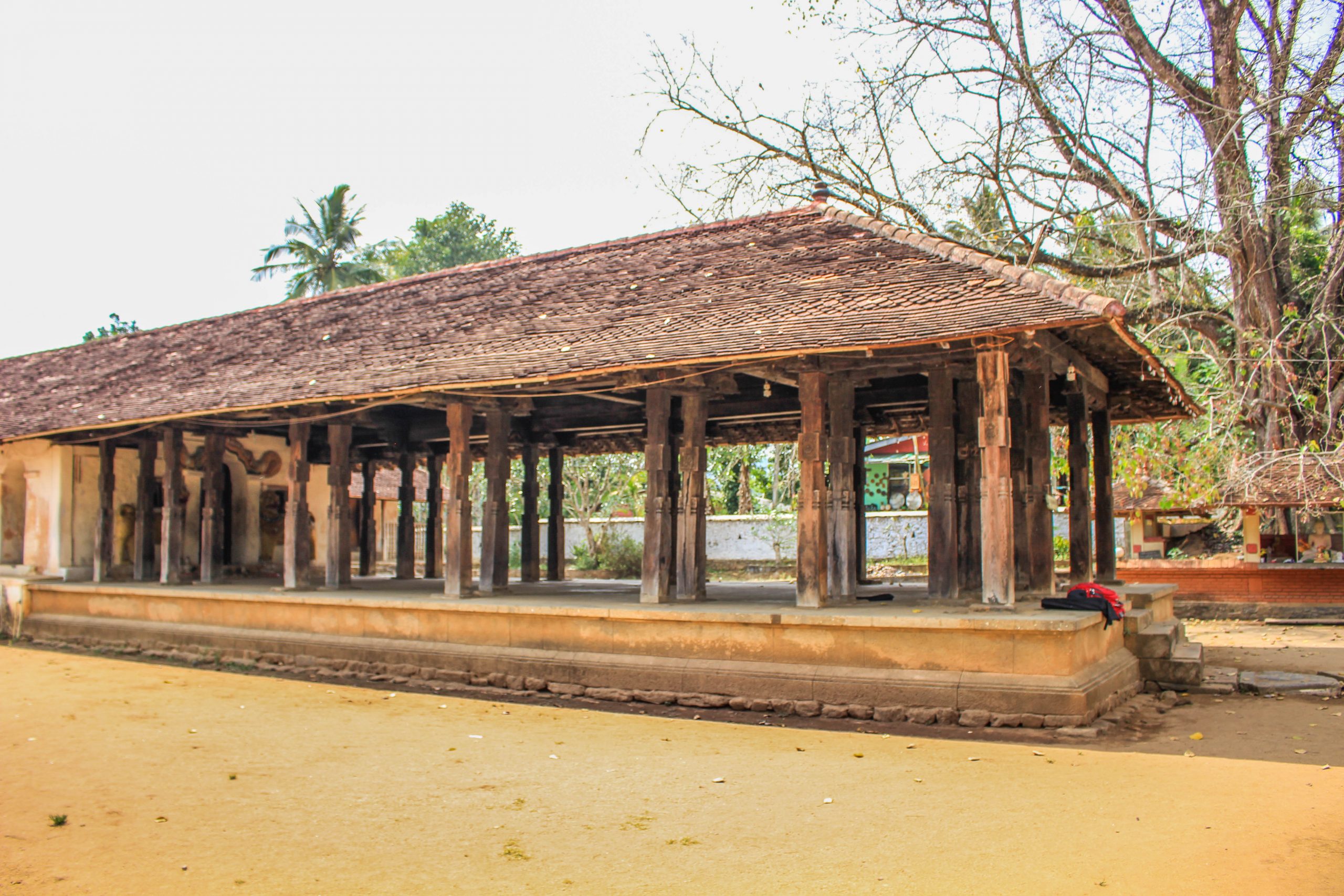
EMBEKKA DEVALAYA (EMBEKKA TEMPLE)
King Vikramabahu III of Gampola Era (AD 1357-1374) built Embekka Devalaya (Embekka Temple) in Sri Lanka. The devalaya is devoted to Mahasen’s worship, commonly referred to as Kataragama deviyo. Also worshiped at this site is a local deity called Devatha Bandara. The shrine is made up of three sections, “Garagha Sanctum,” “Digge” or “Dancing Hall” and “Hevisi Mandapaya” or “Drummers ‘ Hall.” The Drummers ‘ Hall which, owing to the magnificent wood sculptures of its ornate pillars, has attracted visitors ‘ attention to the site. And its roof with a high pitch.
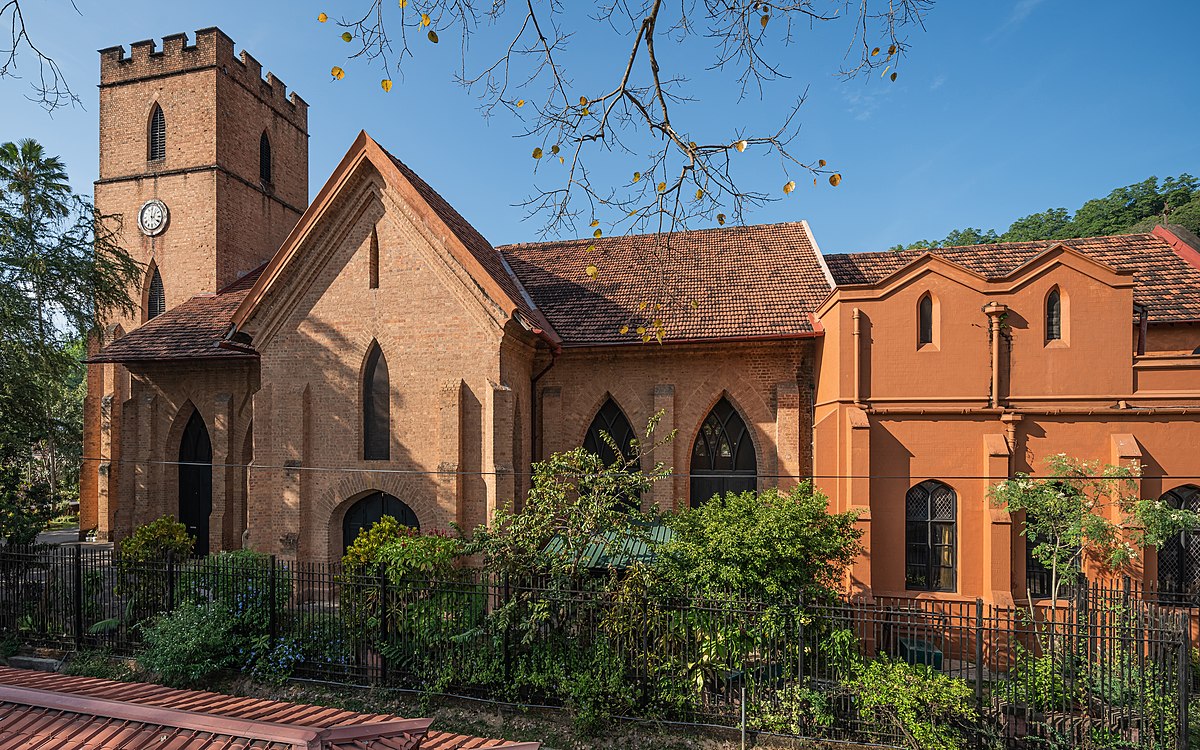
THE CHURCH OF SAINT PAUL
This easy and silently dignified Christian worship site contrasts with the neighboring Tooth Temple, one of the most sacred Buddhist locations in Sri Lanka. Completed in 1848, consecrated in 1853 and extended in 1878 and 1928, it was built primarily to serve British officers stationed in Kandy and to serve as the Garrison Church. Its red-brick Gothic exterior and interior redolent with Victorian religious overtones offers tourists with a spacious and relaxing excursion to recover from a busy morning sightseeing. The lovely stained-glass window above the altar is not to be missed, depicting the three females who find the grave of Jesus empty and told by an angel that “he has arisen”.
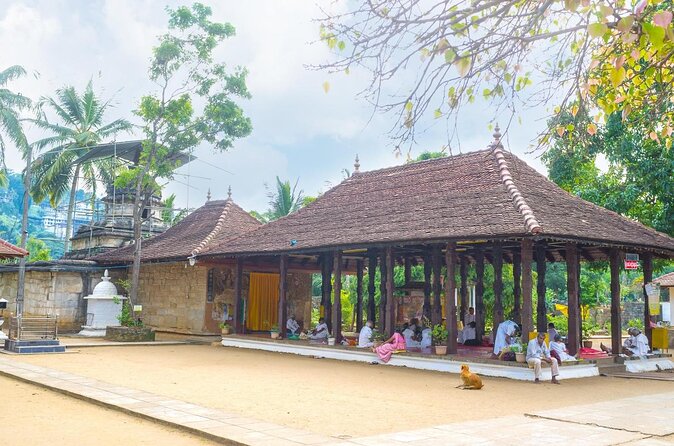
NATHA DEVALE
Buddhism and Hinduism are intertwined with this oldest of Kandy’s devales, devoted to the god Natha, which was the site of the ancient kings ‘ ceremonial ordination. This imposing instance of prominently Hindu architectural style, with its crowning vaulted ceiling, was constructed in the 14th century South Vijayangara style and is situated on the terrace opposite the Royal Palace complex. Its heritage involves playing a significant part in the preparation and distribution of Nanu or medicinal herbs that accompany the first baths taken in the New Year of Sinhala.
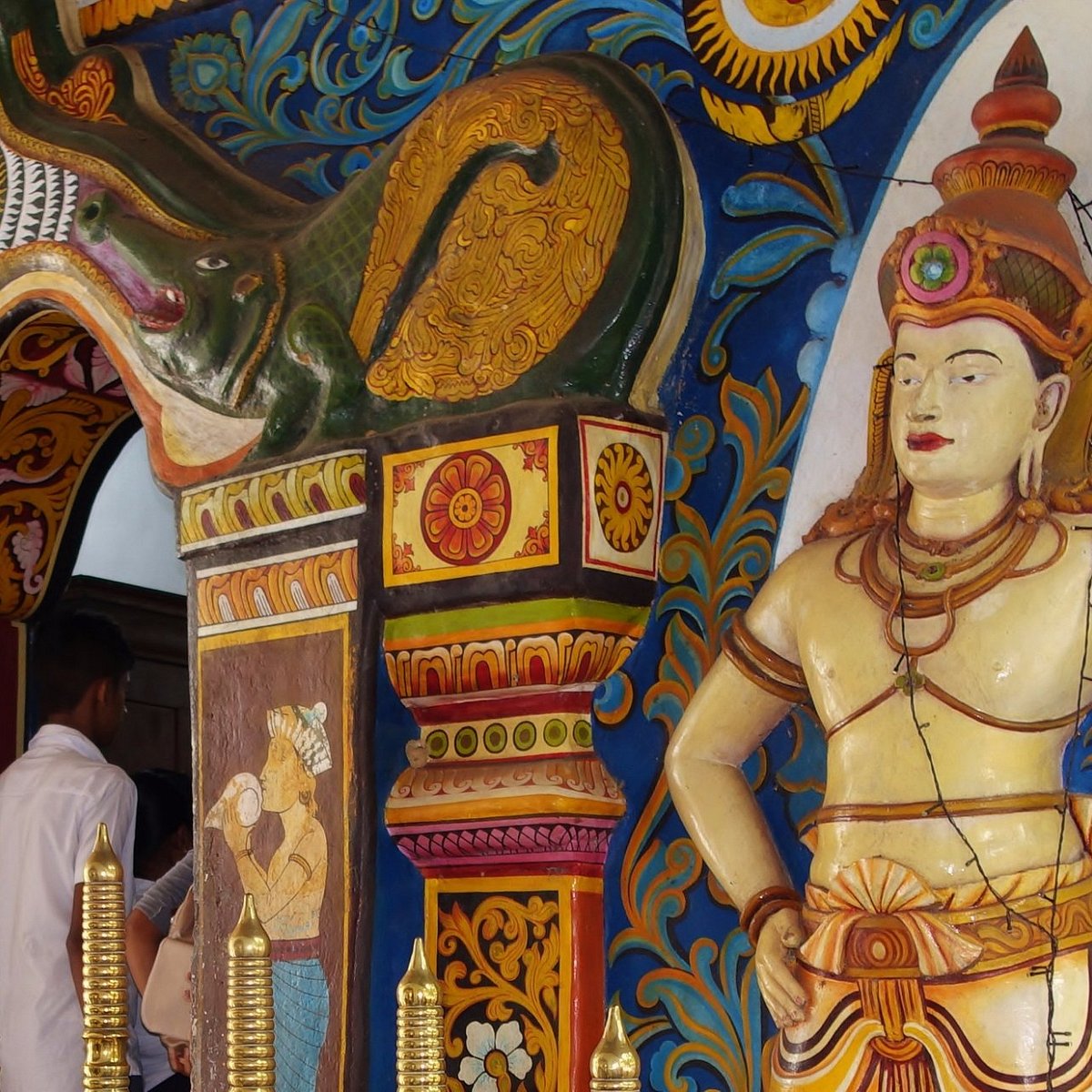
MAHA VISHNU DEVALAYA
The roots of this Vishnu shrine are lost in the mists of time, but it has long been linked with the royal palace and the Temple of the Tooth, a sacred relic revered throughout the globe by Buddhists. According to legend, the Indian epic Ramayana’s Vishnu is the same deity known as Rama. Mahavansa, Sri Lanka’s fantastic chronicle, states that at the moment of Buddha’s death it was Vishnu who was selected to defend Sri Lanka. The building is entered through a two-story Vahalkada that leads to an open hall with columns of timber and beautifully carved steps of stone leading to the drumming hall. The Shrine of the God Dedimunda and a big Bo-tree are on the upper terrace.
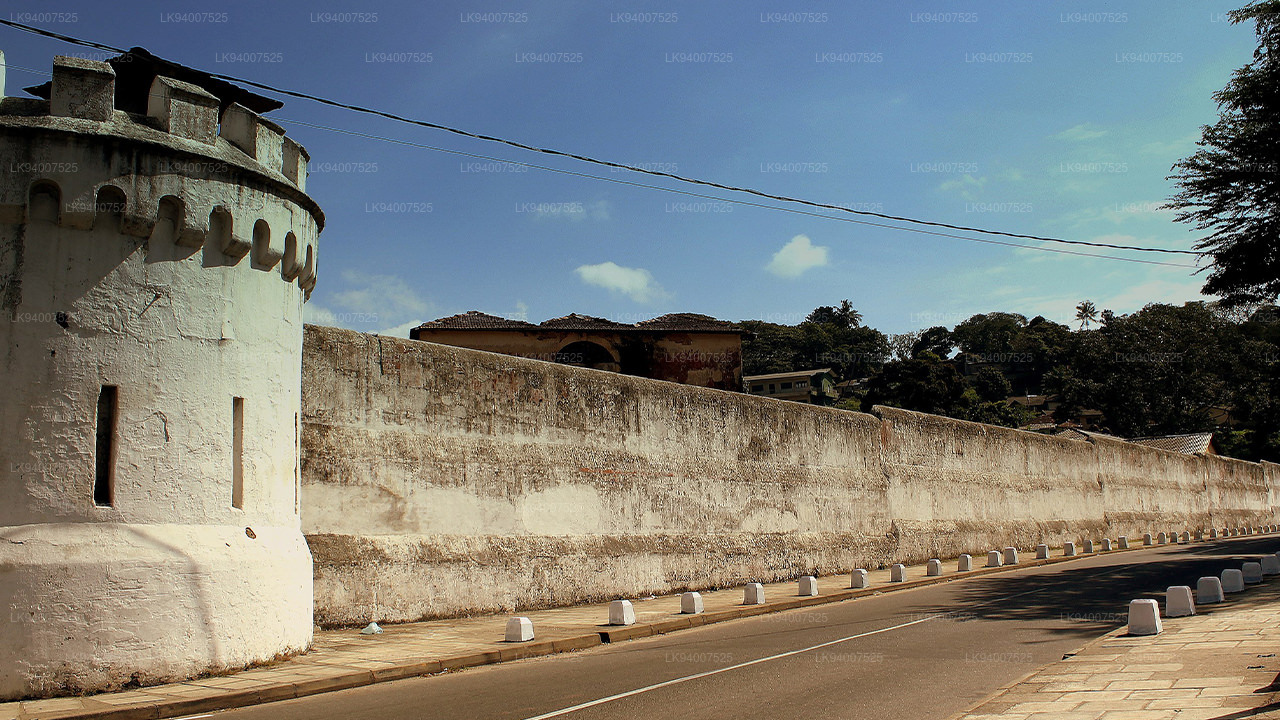
BOGAMBARA PRISON
In 2013, Kandy’s somewhat notorious maximum-security Bogambara prison, believed to have been modeled on the Bastille in Paris, closed its felon-prohibiting wooden gates. But as part of the historic architectural fabric of the city, future plans include a boutique hotel, shopping mall, and museum — including the prison gallows, the latter may include. This’ death trap’ was the only one in the country where three death-row prisoners could be executed simultaneously, and when it was open to the public in 2014, large crowds were queuing to see it.
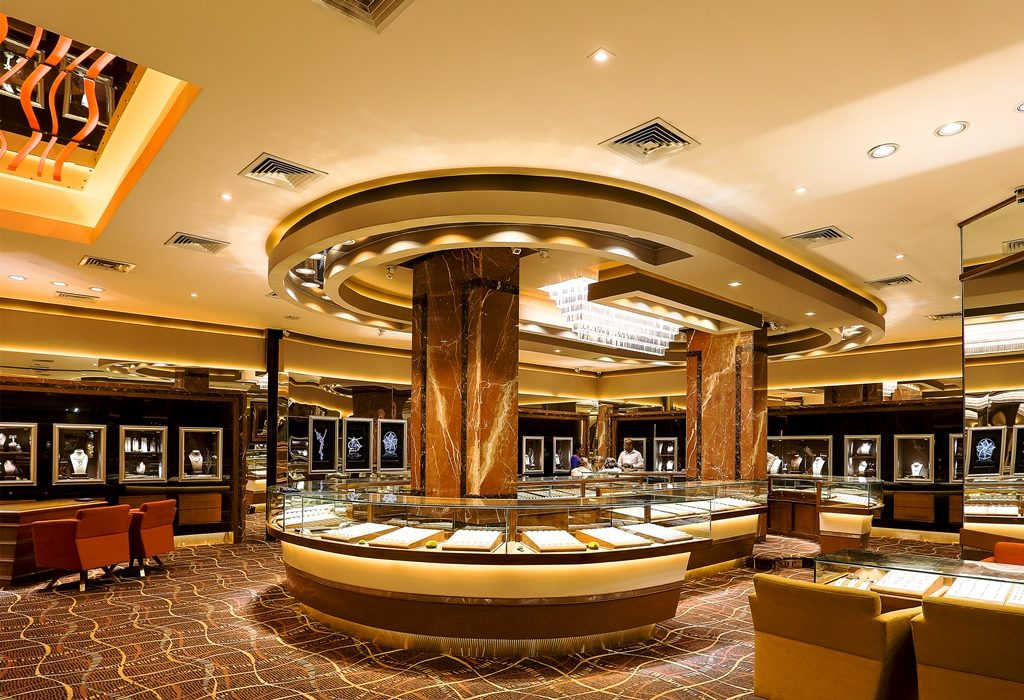
GEM MUSEUM & FACTORY
The gem industry in Sri Lanka has a lengthy and colourful history. Sri Lanka, which means Gem Island, was affectionately known as Ratna-Dweepa. The name reflects its natural richness. Marco Polo wrote the island had the world’s best sapphires, topazes, amethysts, and other gems. Ptolemy, the astronomer of the 2nd century, recorded that beryl and sapphire were the cornerstone of the gem industry in Sri Lanka.
Records of sailors visiting the island say they brought back "Serendib's jewels." Serendib was the ancient name given to the island by middle-eastern and Persian traders who traveled across the Indian Ocean during the 4th and 5th centuries to trade gems from Sri Lanka to the East. Geologically speaking, Sri Lanka is an exceptionally ancient nation. Ninety percent of the island's rocks are of Precambrian era, between 560 and 2,400 million years ago.
The gems form deposits, eluvial deposits, metamorphic deposits, skarn and calcium-rich rocks in sedimentary residual gems. Nearly all of Sri Lanka's gem formations are located in the Highland Complex ' central high-grade metamorphic terrain. The deposits of gems are classified as sedimentary, metamorphic and magmatic; the most abundant are the sedimentary types. The mineralogy of the deposits of gems varies widely with corundum (sapphire, ruby), chrysoberyl, beryl, spinel, topaz, zircon, tourmaline, and the common garnet among others.
Residual deposits are found mainly in river and stream flood plains. Metamorphic kinds of gems make up 90% of Sri Lanka's gem deposits. Nearly 25 percent of Sri Lanka's total land region has been estimated to be possibly gem-bearing, making Sri Lanka one of the nations with the largest density of gem deposits compared to its land mass. You can trail on a sophisticated Gem Museum & Arcade that provides a one-stop shop in Gem Museum, Model Mines, Crafters Workshop and Gem Arcade that you can buy even on your favorite way or budget. Through Sri Lanka customs, the all bought are duty free and likely more cost-effective compared to other nations.
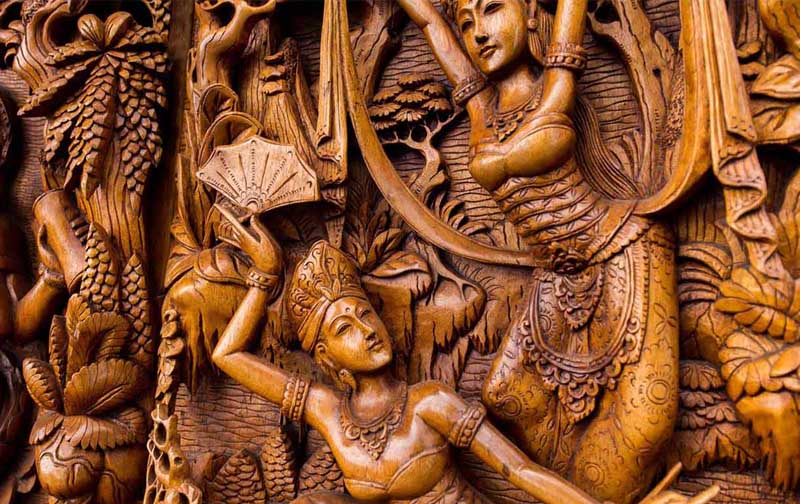
KANDYAN WOOD CARVING FACTORY
The Sri Lankan Wood Carving industry is completely distinct from what you’ve seen so far. Because traditional craftsmen use traditional techniques and easy traditional tools to materialize these ancient designs. To create them more appealing and the wonder is that even sand papers are not used to smooth them; instead, they use their chisels to smooth them. You can see how those lifeless, shapeless pieces of wood become ornamental elephants, wooden wall hangings, stilt fishermen, figures of animals and people.
These creations have long been decorating many of the area's hotels and villas. They are built according to the buyer's taste and satisfaction. So you can get it made by them if you have a design on your head that suits your company, home or any other location. You can order any quantity of design and according to your wish, and you can watch how your order is being processed and you're going to drop it's done!
Or if you have any timber shape and want to transform it into some kind of furnishings or any design or decoration that fits your location, they are very smart even in this free art tradition-" Ruk kala "and you can do it and more. It's their talent. So, visit it, see the difference.
